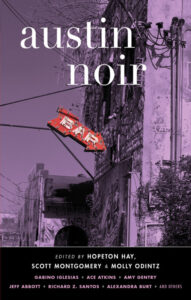This is part one in a continuing blog series on the criminals you’ll meet in INFAMOUS. Check back later this week to learn more on Alvin Karpis. — Ace
Verne Miller—Sheriff, Moonshiner, Hit-man. How did the career of a small-town sheriff from South Dakota promote the creation of the modern FBI? Well, for one thing, he became a gangster.

Vern Miller’s FBI Ph
The earliest years in Verne Miller’s biography remains unclear. It is reported that he was born in Kimball, South Dakota in 1896. Not much is known about his early years, but he was a resident of Huron, South Dakota by 1914. His life appears ordinary and free of any actions that might predict a future of criminal behavior. He enlists in the U.S. Army and serves with honor in World War I and is decorated for his battlefield conduct in France.
He returned to Huron with somewhat heroic credentials, joins the police force for three years, and is elected sheriff of Beadle County in 1920. Miller’s reign as sheriff was brief; in 1922 he stole $4,000 in public funds and left the area. It is unclear as to whether this action was prompted by his wife’s serious illness—she was hospitalized at the Mayo Clinic—or whether it was the first overt act of a “born” criminal.
He was arrested during the following year and sent to prison becoming a model prisoner and confidant of the warden. When released from prison, in 1925, he was tempted by the money to be made in the bootlegging trade. It was the era of Prohibition. He appears to have eventually joined a clan of typical bootleggers and worked in and out of the gangster haven of St Paul, Minnesota. His personal life becomes more complicated; he leaves his wife, takes on a permanent girl friend (VI Mathis of Leola, SD), uses alcohol and drugs to excess, and finally turns to a life of abject violence. By 1932 he is being sought for the murder of two Minneapolis policemen.
In June of 1933 Miller becomes the most wanted criminal in the country. He is identified as a participant in the “Kansas City Massacre.” Three law enforcement officers and Miller’s gangster buddy, Frank Nash, were killed in a massive shootout at the Union Railroad Station. Within a year Miller was found executed in a corn field in Illinois.
It was the Kansas City incident that enables J. Edgar Hoover to seek legislation and funding to modernized federal law enforcement agencies. These efforts created in the FBI as we know it today. Miller’s actions were not the only impetus behind expansion of federal law enforcement efforts, but they were a vital ingredient.
Miller’ name never reached the legendary status of others: Baby Face Nelson, Ma Barker, Machine Gun Kelly, Pretty Boy Floyd, Bonnie and Clyde, had names that easily remained in the public’s memory. “Verne Miller” is a name that seems too common, too pedestrian.
Miller was however, one of this countries most violent and ruthless gangster. His actions far exceed his reputation.
One wonders though, what were the driving forces in the life of that fresh-faced war hero— walking down Huron’s main street, well liked, admired, and considered to have a bright future in local Republican Party— that resulted in being fatally shot in the head, lying face-down in the Illinois mud. He didn’t grow up amidst the notorious youth gangs of Brooklyn, the Bronx, or Chicago. He grew up as a small-town kid. What happened? — South Dakota Retrospect

